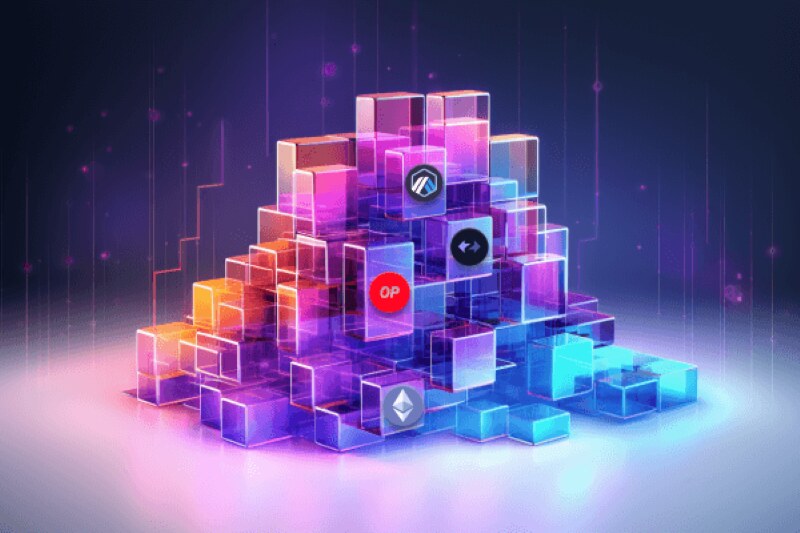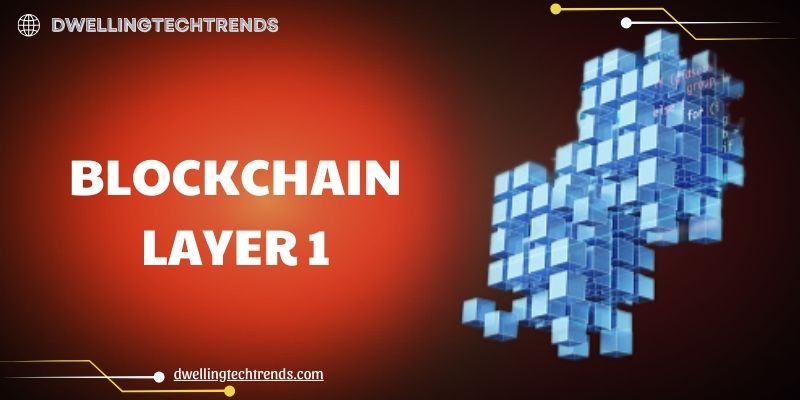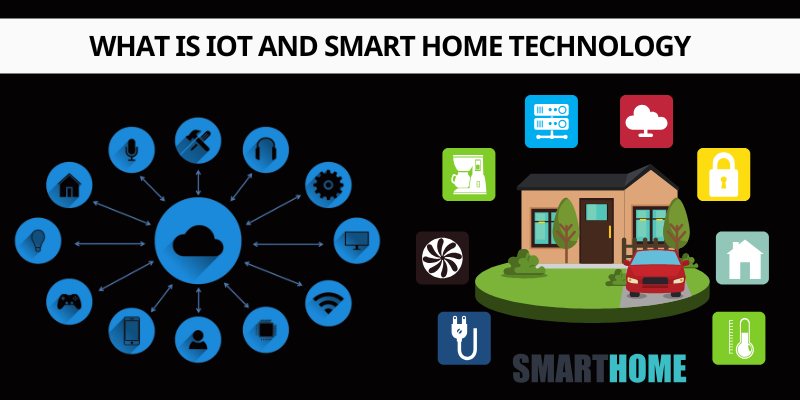Blockchain Layer 1 is at the center of the technological innovation race in the blockchain industry. These platforms are not only the pillars supporting decentralized applications (dApps) but also determine the scalability and security of the entire Web3 ecosystem. So, which platform will emerge as the ultimate winner in this fierce competition?
Contents
- 1 Overview of Blockchain Layer 1
- 2 Analysis of the Correlation Between Layer 1 Blockchains
- 3 Key Factors Determining Leadership
- 4 Trends and Predictions for Blockchain Layer 1 in the Future
- 4.1 Shift Towards Energy-Efficient Consensus Mechanisms
- 4.2 Interoperability and Multi-Chain Ecosystems
- 4.3 Decentralization and Governance Models
- 4.4 Blockchain-as-a-Service (BaaS) and Enterprise Adoption
- 4.5 Smart Contract Development and Cross-Industry Use Cases
- 4.6 Rise of Layer 1 Chains Tailored to Specific Use Cases
Overview of Blockchain Layer 1

Blockchain Layer 1 refers to the foundational blockchain networks that are designed to manage and validate transactions. These Layer 1 blockchains are the core infrastructure on which decentralized applications (DApps), smart contracts, and various blockchain-based projects are built. Some well-known examples of Layer 1 blockchains include Bitcoin, Ethereum, Solana, and Binance Smart Chain. Layer 1 blockchains are the backbone of the cryptocurrency and decentralized finance (DeFi) ecosystems, facilitating trustless peer-to-peer transactions and the execution of smart contracts.
In the context of blockchain technology, the term “Layer 1” refers specifically to the base protocol and infrastructure of a blockchain, in contrast to Layer 2 solutions, which are built on top of Layer 1 to improve scalability and transaction speed. The development and evolution of blockchain Layer 1 are critical because they establish the rules, consensus mechanisms, and fundamental features that determine how data is stored, verified, and processed across the network.
Layer 1 blockchains hold immense importance in the blockchain ecosystem due to their ability to offer decentralized solutions, security, and scalability. They are responsible for transaction processing and the verification of data without the need for centralized intermediaries. This ensures that trust and control are distributed across all participants in the network.
For example, Bitcoin, the first and most widely known Layer 1 blockchain, operates on a Proof of Work (PoW) consensus mechanism to validate transactions and secure the network. Ethereum, another prominent Layer 1 blockchain, initially used PoW but is transitioning to Proof of Stake (PoS) with Ethereum 2.0 in an effort to reduce energy consumption and enhance scalability.
The significance of Layer 1 blockchains goes beyond cryptocurrencies. They are also the underlying infrastructure for decentralized applications (DApps) and smart contracts, enabling peer-to-peer transactions, tokenized assets, and decentralized finance (DeFi) services. Layer 1 blockchains play a central role in shaping the future of industries such as finance, healthcare, supply chain management, and governance.
Analysis of the Correlation Between Layer 1 Blockchains

Ethereum
Ethereum is regarded as the “king” of Layer 1 Blockchains due to its pioneering role in supporting decentralized applications and smart contracts. The transition from a Proof of Work (PoW) mechanism to Proof of Stake (PoS) through Ethereum 2.0 is a significant milestone that has helped the platform reduce energy consumption and enhance scalability.
However, Ethereum still faces major challenges:
- High transaction fees: Although Ethereum 2.0 has alleviated some pressure, gas fees remain a concerning issue.
- Network congestion: Layer 2 solutions like Polygon have somewhat alleviated the load, but they do not completely resolve the problem.
Nevertheless, the DeFi and NFT ecosystems on Ethereum remain the largest, with thousands of active projects. This creates a sustainable competitive advantage for Ethereum.
Solana
Solana is known for its extremely fast transaction processing speeds and low transaction fees. This platform employs a consensus mechanism called Proof of History (PoH) combined with Proof of Stake, achieving speeds of up to 65,000 transactions per second.
Advantages of Solana:
- Speed and low costs are Solana’s greatest strengths.
- Solana is one of the most prominent blockchains for new NFT projects.
Disadvantages of Solana:
- Solana has experienced several downtime incidents, undermining investor confidence.
- A limited number of nodes has led to criticism that Solana is not truly decentralized.
Cardano
Cardano stands out with its scientific approach, relying on academic research to develop its blockchain. Cardano’s Proof of Stake (PoS) consensus mechanism, called Ouroboros, is promoted as safe and energy-efficient.
Advantages of Cardano:
- Cardano emphasizes building a sustainable and highly secure blockchain.
- Every improvement is thoroughly researched and tested before implementation.
Disadvantages:
- The academic development process leads to longer upgrade timelines.
- The number of active projects on Cardano remains lower compared to Ethereum or Solana.
Avalanche
Avalanche boasts the ability to support thousands of sub-blockchains (subnets) within a single ecosystem. This makes Avalanche a top choice for applications requiring high customization.
Advantages:
- Avalanche can process thousands of transactions per second at very low fees.
- Subnets allow projects to design their own blockchains on the Avalanche platform.
Disadvantages:
- Avalanche faces competition from other high-performance blockchains like Solana and Binance Smart Chain.
Binance Smart Chain (BSC)
Binance Smart Chain, supported by the Binance exchange, has quickly become one of the most popular blockchains due to its low transaction fees and easy integration with DeFi applications.
Advantages:
- Binance provides substantial financial and technical resources for BSC development.
- This makes BSC a popular choice for new users.
Disadvantages:
- Most BSC nodes are under Binance’s control.
- Compared to Ethereum, BSC still lacks high-end DeFi and NFT projects.
Key Factors Determining Leadership

The competition among blockchain Layer 1 networks is intensifying, with numerous projects vying for leadership in an increasingly crowded and dynamic ecosystem. As more use cases for blockchain technology emerge, the question of which blockchain network will dominate the Layer 1 space becomes central to the future of the entire industry. Several key factors determine the leadership potential of a Layer 1 blockchain, influencing its success, adoption, and the degree of innovation it can bring to the broader blockchain ecosystem. Understanding these factors is crucial for identifying the blockchain projects that are most likely to thrive in the competitive landscape.
This analysis explores the fundamental elements that determine which Layer 1 blockchain will lead in the competition, including scalability, security, developer support, ecosystem maturity, consensus mechanisms, and interoperability.
Scalability – The Backbone of Blockchain Success
Scalability remains one of the most critical factors in determining the leadership of a Layer 1 blockchain. Scalability refers to a blockchain’s ability to handle an increasing volume of transactions, applications, and users without compromising its performance or increasing transaction fees significantly. As blockchain adoption grows, scalability becomes essential for networks to manage high traffic loads while maintaining low latency and high throughput.
Several Layer 1 projects, such as Solana and Polkadot, are focusing heavily on scalability as a distinguishing factor. Solana, for example, uses its unique Proof of History (PoH) consensus mechanism to offer high throughput, processing thousands of transactions per second with low fees. On the other hand, Ethereum 2.0 is transitioning from Proof of Work (PoW) to Proof of Stake (PoS) to improve scalability while reducing energy consumption.
Scalability is particularly important for applications in decentralized finance (DeFi), non-fungible tokens (NFTs), and enterprise solutions, where high transaction volumes are common. A Layer 1 blockchain that can maintain scalability without significant network congestion or price volatility will likely hold a competitive edge and attract widespread adoption.
Security – Ensuring Trust and Stability
Security is the cornerstone of any successful blockchain network. Without robust security mechanisms, a blockchain’s integrity can be compromised, leading to potential attacks, loss of funds, or exploitation of vulnerabilities. For a Layer 1 blockchain to maintain leadership, it must be able to offer a high level of security that instills trust among users, developers, and investors.
Security is often measured by factors such as the blockchain’s consensus mechanism, its resistance to attack vectors, and its ability to prevent double-spending and Sybil attacks. Bitcoin, for example, benefits from its Proof of Work (PoW) mechanism, which is widely regarded as one of the most secure consensus protocols. However, PoW’s energy inefficiency has led to the rise of alternative consensus algorithms such as PoS, which is being adopted by Ethereum in its shift to Ethereum 2.0.
Another critical aspect of security is the stability and resilience of the blockchain’s network. Layer 1 blockchains that can prevent network outages, transaction failures, and malicious attacks (such as 51% attacks) will be positioned as leaders. Projects like Cardano and Polkadot emphasize rigorous security protocols and academic peer reviews to ensure their blockchain systems are secure and resilient.
Developer Ecosystem and Community Support
A strong developer ecosystem is an essential factor in determining which Layer 1 blockchain will lead. The success of a blockchain network often depends on the number and quality of developers contributing to its ecosystem, as well as the ability to attract new developers to build decentralized applications (DApps) and services on the platform.
Ethereum has long been a dominant force in this space, largely due to its extensive developer community and the availability of a vast array of developer tools, libraries, and frameworks. Ethereum’s Solidity programming language is the foundation for the development of smart contracts, and its ecosystem provides extensive resources for developers, including Truffle, Hardhat, and Remix.
Similarly, the Solana blockchain, despite facing challenges related to network stability, has attracted a growing community of developers due to its speed, low transaction costs, and development tools like Rust and Anchor.
Trends and Predictions for Blockchain Layer 1 in the Future

The competition among Layer 1 blockchains has intensified as the technology evolves and new use cases for blockchain continue to emerge. With Ethereum, Solana, Cardano, and Polkadot leading the charge, Layer 1 blockchains are vying for dominance in an ever-expanding ecosystem. As this competition unfolds, there are several key trends and predictions for the future of Layer 1 blockchains that will significantly shape their trajectories. This analysis aims to outline these trends and make predictions about how they will impact the competition among Layer 1 blockchains and who may emerge as the leader in the years to come.
Shift Towards Energy-Efficient Consensus Mechanisms
One of the most prominent trends shaping the future of Layer 1 blockchains is the move towards more energy-efficient consensus mechanisms. While Proof of Work (PoW) has been the cornerstone of Bitcoin and other major blockchains, its environmental impact has come under increasing scrutiny. The blockchain industry is responding to this concern by exploring more sustainable alternatives.
Ethereum’s transition to Proof of Stake (PoS) with Ethereum 2.0 is a notable example of this shift. PoS significantly reduces energy consumption by relying on validators to propose and verify blocks instead of energy-intensive mining. Other Layer 1 blockchains like Cardano and Polkadot have already adopted PoS, proving that energy-efficient consensus mechanisms can be just as secure, if not more so, than PoW.
As environmental concerns continue to grow globally, the future of Layer 1 blockchains will likely see an increase in PoS adoption and even more innovative consensus models that strike a balance between decentralization, security, and energy efficiency.
Interoperability and Multi-Chain Ecosystems
As the blockchain ecosystem continues to diversify, the need for interoperability between different blockchain networks has become increasingly apparent. Blockchain Layer 1 projects are beginning to emphasize the ability to communicate across different networks, allowing them to become part of larger multi-chain ecosystems. Polkadot’s parachains and Cosmos’ Inter-Blockchain Communication (IBC) are early examples of efforts to create interoperability between blockchains.
The future of Layer 1 will likely see more initiatives that focus on seamless interaction between different chains. Layer 2 solutions will play an essential role in this as well, enabling scalability without compromising decentralization. The combination of Layer 1 and Layer 2 technologies will allow for greater flexibility in how transactions and smart contracts are executed across different networks.
Decentralization and Governance Models
Decentralization remains a foundational principle of blockchain technology. However, as blockchain networks grow in size and complexity, achieving true decentralization while maintaining efficiency and scalability is becoming a challenge. This has led to an increased focus on governance models that balance decentralization with the ability to adapt quickly to market conditions and user needs.
Governance by community consensus, such as the model used by Tezos and Polkadot, is gaining traction. This allows token holders to have a say in protocol upgrades and the future direction of the blockchain. The success of Decentralized Autonomous Organizations (DAOs) also underscores the growing importance of decentralized governance structures in shaping the future of blockchain networks.
Blockchain-as-a-Service (BaaS) and Enterprise Adoption
The future of Layer 1 blockchain networks will also be heavily influenced by the rise of Blockchain-as-a-Service (BaaS) platforms, which allow enterprises to leverage blockchain technology without the need to develop their own infrastructure. BaaS platforms are gaining momentum because they make it easier for businesses to integrate blockchain technology into their operations, such as supply chain management, data security, and financial services.
IBM’s Hyperledger and Microsoft Azure Blockchain Service are among the platforms providing BaaS, and blockchain Layer 1 projects are increasingly looking to support enterprise solutions. By offering enterprise-focused features such as improved scalability, high throughput, and privacy enhancements, Layer 1 blockchains will attract more businesses to adopt blockchain technology.
Smart Contract Development and Cross-Industry Use Cases
Smart contracts, self-executing contracts with the terms of the agreement directly written into code, are one of the key features of Layer 1 blockchains, particularly Ethereum. The ability to automate business processes and reduce reliance on intermediaries makes smart contracts highly valuable in many industries.
The future of Layer 1 blockchains will see the expansion of smart contract use beyond traditional use cases such as decentralized finance (DeFi) and NFTs. We expect smart contracts to be applied in more industries, including healthcare, real estate, government services, and intellectual property management. This broadening of use cases will drive further innovation in blockchain development, with Layer 1 blockchains focusing on improving smart contract functionality, security, and scalability.
Rise of Layer 1 Chains Tailored to Specific Use Cases
While many Layer 1 blockchains, like Ethereum and Solana, aim to be general-purpose platforms, there is a growing trend toward specialized blockchains designed to serve specific use cases. For example, Filecoin focuses on decentralized storage, while Chainlink is tailored for oracle services. These specialized Layer 1 chains offer optimized solutions for particular industries or technical challenges, making them highly competitive in their respective fields.
As blockchain adoption continues to grow, the need for tailored, optimized Layer 1 blockchains will also rise. These specialized networks will outperform general-purpose blockchains in their niche use cases, providing faster, more efficient, and cost-effective solutions.
These factors and trends will shape the future, helping to determine which Layer 1 blockchains have the capacity to dominate the market.
The competition among Blockchain Layer 1 remains fierce, with each platform offering unique advantages and strategies. The future of Layer 1 will depend on scalability capabilities, security measures, and ecosystem development. To stay updated with the latest information in this field, follow Dwellingtechtrends.



